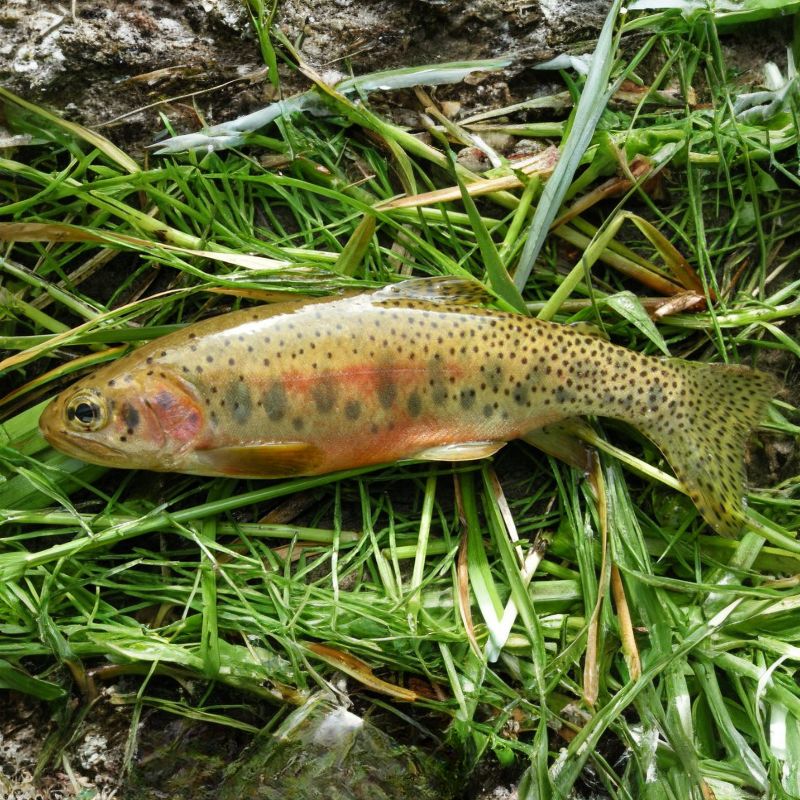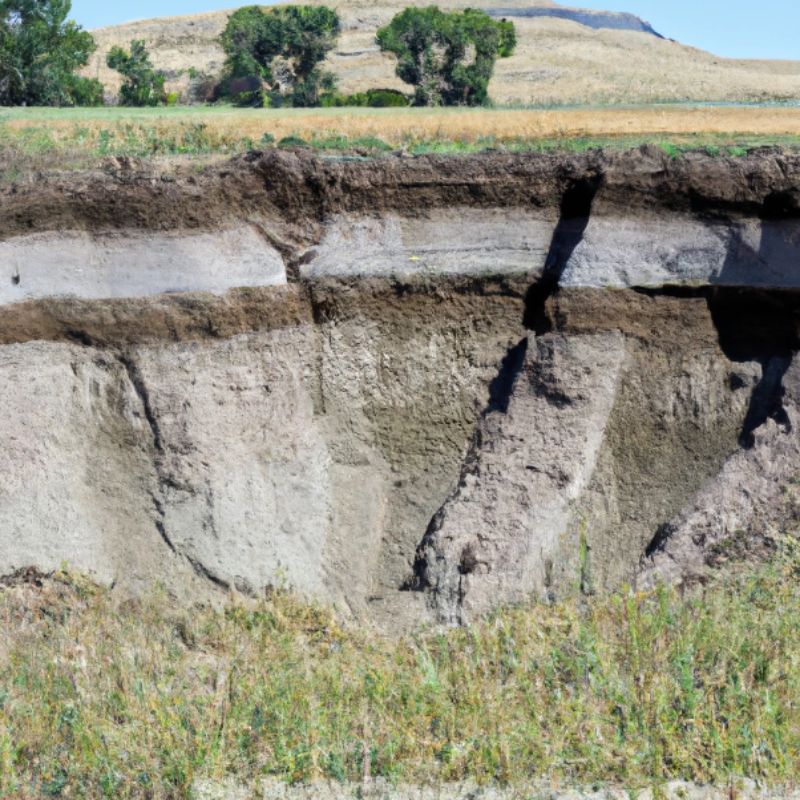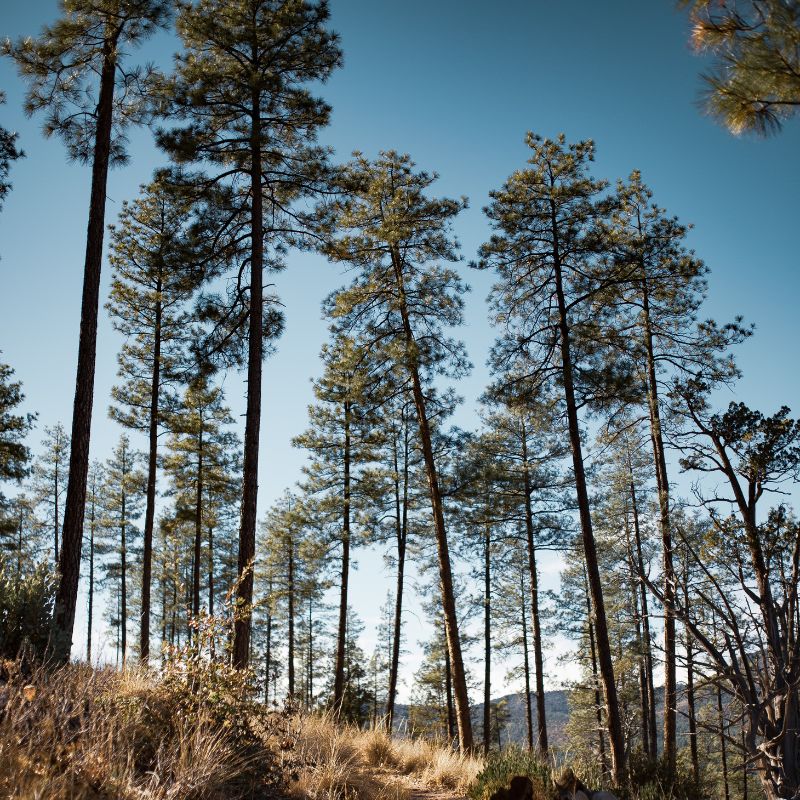Explore the Fascinating History of Montana
Take our Montana Trivia Quizzes for a Chance to Win a 6-Month Subscription to History By Mail!

The History of Montana
Journey Through Montana Trivia
Welcome to our Montana history and trivia page, brought to you by History By Mail. Join us as we embark on an exciting exploration of the Treasure State's vibrant past and captivating heritage. From the breathtaking landscapes of Glacier National Park to the legendary tales of the Wild West, we'll delve into Montana's hidden gems and challenge your knowledge with intriguing quizzes. Let's embark on our journey through Montana's history and trivia together.
Facts about Montana
State Name: Montana
State Abbreviation: MT
Capital: Helena
Name Origin: The origin of Montana's name can be traced back to the Spanish word "montaña," which translates to "mountainous."
Nickname: The Treasure State
Statehood: November 8, 1889 (41st)
State Motto: Oro y plata (Gold and silver)
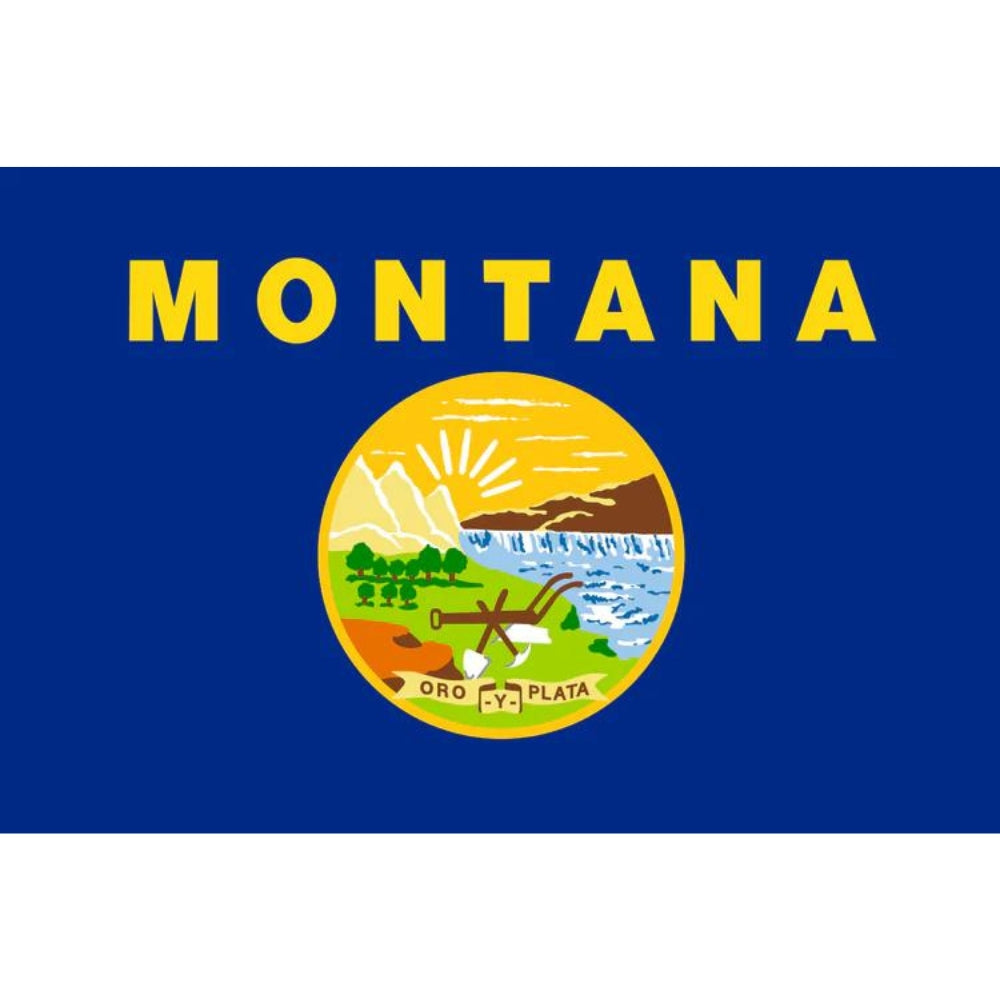
Montana's Flag
The Montana state flag was adopted in 1905 and features a blue field with the state seal in the center. The seal depicts a plow, a pickaxe, and a shovel, symbolizing Montana's rich agricultural and mining industries. Above the seal is the state motto, "Oro y Plata," meaning "Gold and Silver" in Spanish, representing Montana's significant mineral resources.
Montana's Great Seal
Montana's State Seal was designed by a committee appointed by the First Montana Legislative Assembly in 1865 and adopted as the official seal in 1866. The committee drew inspiration from various sources, including the Hudson Bay Company's seal and other territorial seals.
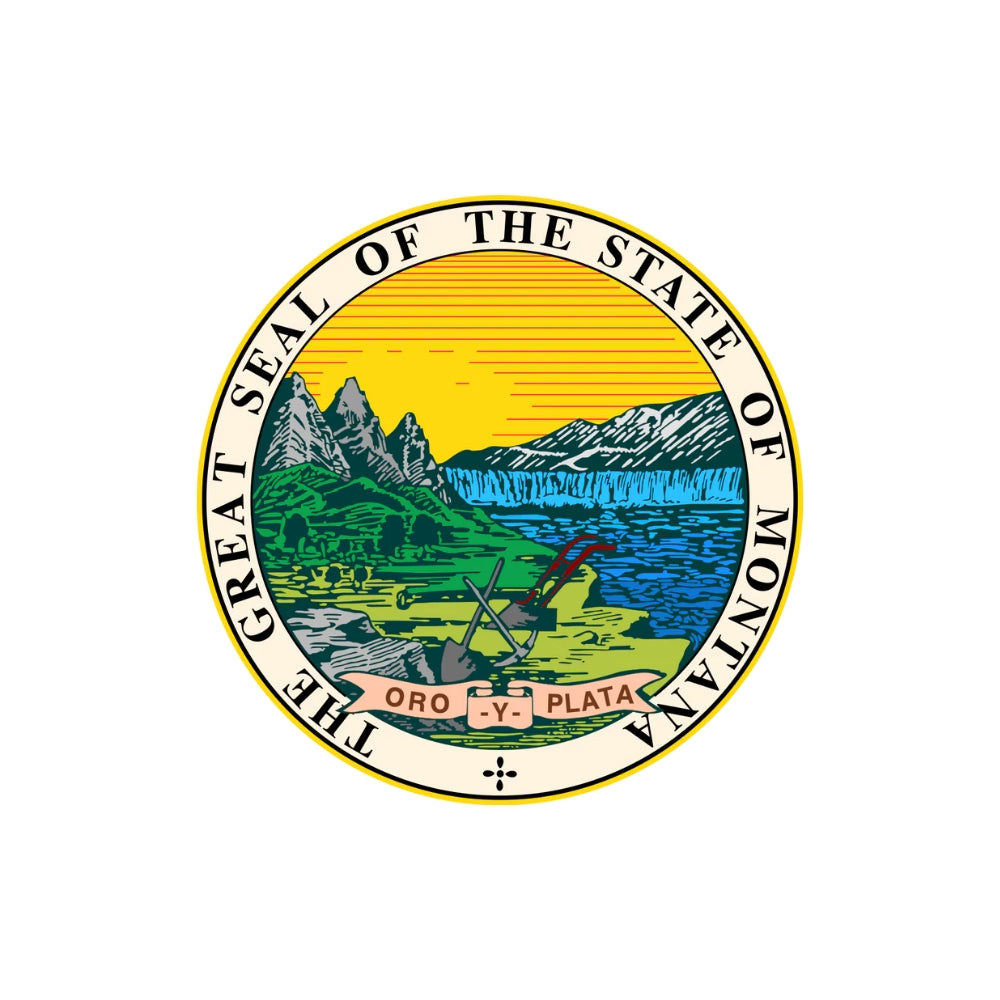
--- State Trivia #1 ---
History of Montana
At least 12,600 years ago, the first inhabitants arrived in what is now Montana. Native American tribes, such as the Crow, Cheyenne, Blackfeet, and Kalispel, later established their communities on this land after thousands of years.
It was not until 1805 that outsiders began to explore this region when Meriwether Lewis and William Clark, accompanied by the Native American guide Sacagawea, passed through on their famous expedition across the American West. Over 50 years later, the discovery of gold attracted settlers who flocked to Montana in pursuit of their own fortunes. With a growing population and the economic value of mining, the land was designated as a U.S. territory in 1864 and eventually became a state in 1889.
State Symbols
Fun Facts
- Montana boasts its unique variation of oatmeal known as Cream of the West. Since 1914, local families have savored this roasted wheat cereal that has become a beloved culinary tradition.
- Prominent figures from Montana include actor Gary Cooper, daredevil motorcycle stuntman Evel Knievel, and Jeannette Rankin, who made history as the first woman ever elected to the U.S. Congress.
- Travel back in time by visiting Virginia City, an authentic gold mining town that has preserved its 1800s charm. Immerse yourself in the era with 19th-century plays, stagecoach tours, and stores that proudly showcase century-old artifacts.
- Gardiner, Montana serves as the original entrance to Yellowstone National Park, the world's inaugural national park. Established in 1903, this gateway provides access to the natural wonders and beauty that make Yellowstone a global treasure.
- Montana distinguishes itself as the sole state with river systems that flow into the Hudson Bay, Pacific Ocean, and the Gulf of Mexico. This unique geographical feature showcases the state's diverse and interconnected waterways.
--- State Trivia #2 ---

Things To Do in Montana
- Explore Glacier National Park: Immerse yourself in the stunning natural beauty of Glacier National Park, home to towering mountains, sparkling lakes, and pristine wilderness. Hike the scenic trails, drive along the Going-to-the-Sun Road, spot wildlife, and marvel at the breathtaking glaciers.
- Visit Yellowstone National Park: Discover the iconic geothermal wonders, majestic waterfalls, and diverse wildlife of Yellowstone National Park. Witness the eruption of the famous Old Faithful geyser, explore the colorful hot springs, hike to mesmerizing viewpoints, and keep an eye out for grizzly bears and wolves.
- Experience the Wild West in Virginia City: Step back in time in Virginia City, an authentic 19th-century gold mining town. Take a historic tour, witness live performances, ride a stagecoach, and browse through antique shops and museums that showcase the town's rich history.
- Enjoy outdoor activities in Big Sky: Experience the thrill of outdoor adventures in Big Sky, Montana's adventure playground. Ski down the slopes of Big Sky Resort, go hiking or mountain biking in the scenic trails, fly fish in the pristine rivers, or embark on a whitewater rafting expedition.
- Discover the cultural heritage of Missoula: Explore the vibrant city of Missoula, known for its arts, culture, and outdoor recreation. Visit the Missoula Art Museum, catch a performance at the historic Wilma Theatre, stroll along the scenic Clark Fork River, and indulge in the local food and craft beer scene.
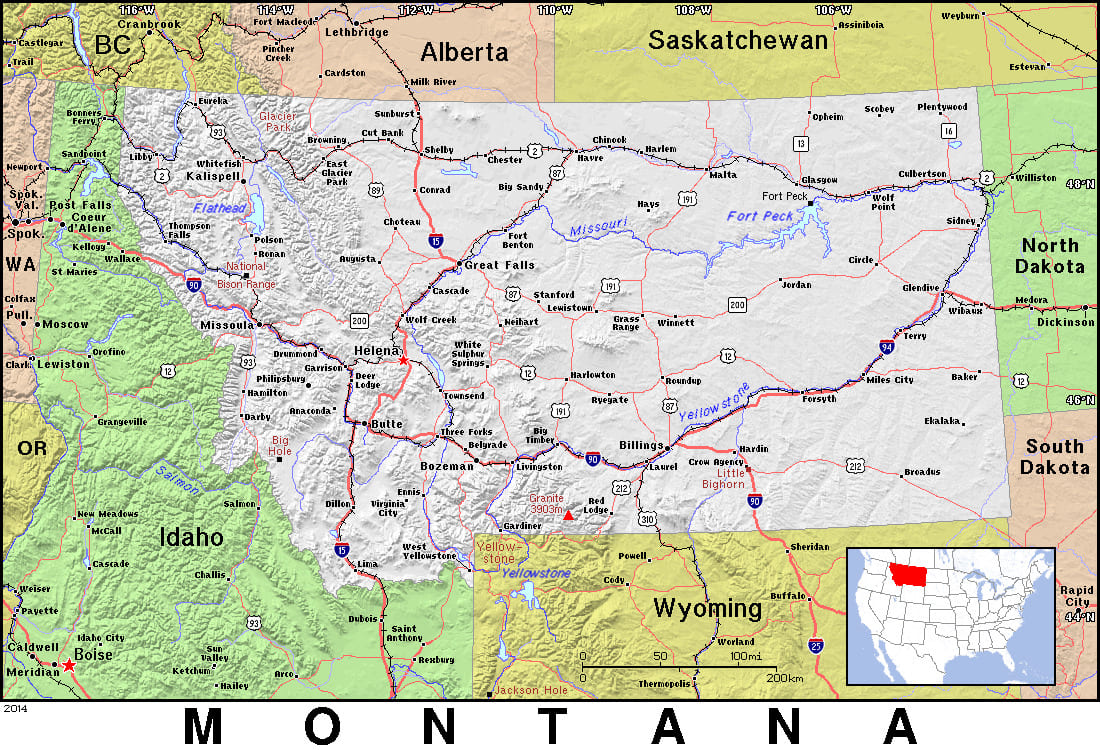
General Map of Montana
Montana is bordered by Canada in the north, North Dakota and South Dakota in the east, Wyoming and Idaho in the south, and Idaho in the west.
The state is known for having two very different geographic regions. The Rocky Mountain region covers the western two-fifths of the state.
Famous People From Montana
--- State Trivia #3 ---
FREQUENTLY ASKED QUESTIONS (FAQ) ABOUT MONTANA
Montana is often referred to as "The Treasure State." This nickname was inspired by the state's rich mineral resources, including gold, silver, and copper. The moniker was chosen in the late 19th century during a time of booming mining activity.
Montana became the 41st state of the United States on November 8, 1889. It was initially part of the Dakota Territory and was later organized as the Montana Territory in 1864. As settlers flocked to the area for its mining opportunities and fertile land, the population grew, eventually leading to statehood.
The Battle of the Little Bighorn, also known as Custer's Last Stand, took place in 1876 near present-day Crow Agency, Montana. It was a conflict between the Lakota, Cheyenne, and Arapaho tribes and the U.S. 7th Cavalry Regiment led by General George Custer. The Native American forces, led by Sitting Bull and Crazy Horse, defeated Custer's forces in a decisive victory.
Montana was a trailblazer in women's suffrage. In 1914, it became one of the first states to grant women the right to vote, six years before the 19th Amendment was ratified nationally. Montana's commitment to women's rights was a remarkable achievement in the fight for gender equality.
Related Resources
- Visit Montana - The official website of the Montana Office of Tourism provides comprehensive information on attractions, activities, events, and travel planning in Montana: https://www.visitmt.com/
- Montana.gov - The official website of the state of Montana offers a wide range of resources, including information about government services, business, education, and more: https://mt.gov/
- Montana Historical Society - The Montana Historical Society preserves and promotes Montana's rich history and cultural heritage. Their website provides access to historical archives, exhibits, educational resources, and events: https://mhs.mt.gov/
- Glacier National Park - Discover the stunning beauty of Glacier National Park, located in Montana's Rocky Mountains. The park's official website offers information about hiking trails, camping, wildlife, and visitor services: https://www.nps.gov/glac/index.htm
- Yellowstone National Park - Explore the world's first national park, located primarily in Wyoming but with portions extending into Montana. The official website provides details about geothermal features, wildlife, activities, and visitor information: https://www.nps.gov/yell/index.htm
- Montana State Parks - Experience the natural beauty of Montana through its state parks. The Montana Fish, Wildlife & Parks website offers information on park locations, activities, camping, and more: http://stateparks.mt.gov/
- Montana Wilderness Association - This nonprofit organization is dedicated to preserving Montana's wild places. Their website provides information on conservation efforts, outdoor recreation, volunteer opportunities, and more: https://wildmontana.org/
- Montana Museum of Art and Culture - Located at the University of Montana, this museum showcases a diverse collection of artwork and cultural artifacts. Visit their website to learn about current exhibitions and educational programs: https://www.umt.edu/montanamuseum/

